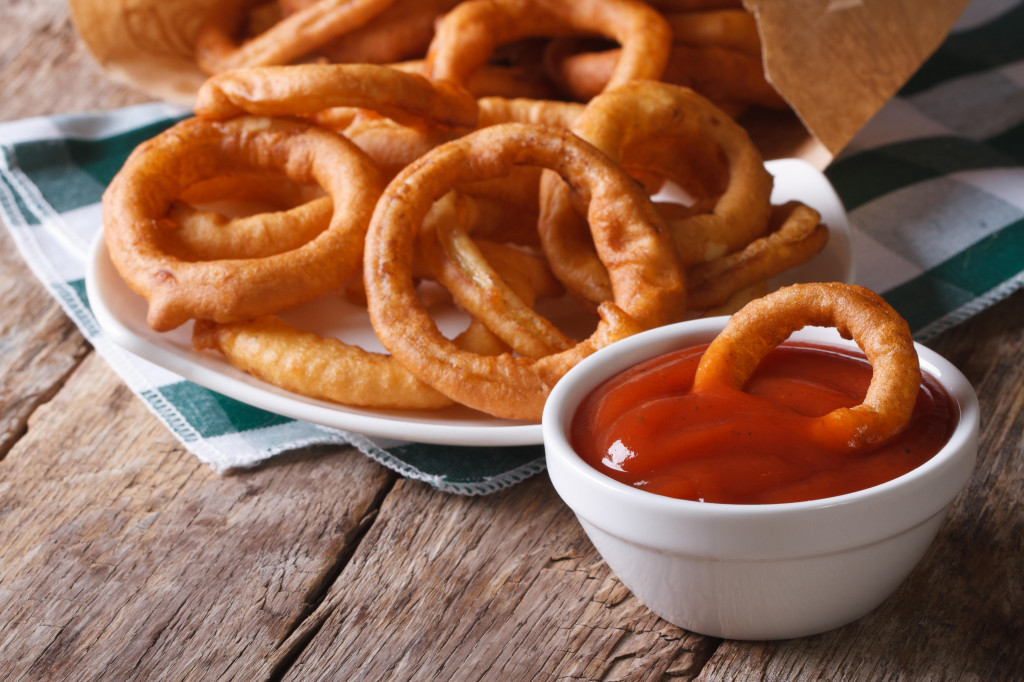(Source from Reuters/Alamy)
In Western cooking, sauce means liquid seasoning, and etymology means salt, derived from the Latin word Sal. Sauce plays an important role in enhancing appetite and combining ingredients in the cooking process by giving nutrients, taste, and color to the dish. It is no exaggeration to say that the life of a dish is determined by the taste of the sauce. In Western cuisine, meat is the center of the meal, so you should prepare a recipe and a sauce that goes well with it. In addition, in recent years, Western culture has developed called ‘dipping sauce’. Dipping potato chips and taco chips is a typical example, but you should be very careful about “double dipping” (dipping the sauce back into your mouthful). Although there may be individual differences, there are more people who think it negatively than in the East due to hygiene reasons. If you look at the sauce, it can be largely divided into two types: French and Anglo-American. The French style uses broth, milk, and cream to enhance the taste of the ingredients by harmonizing with the main ingredients and compensating for the shortcomings of the ingredients, while the British American style usually adds spices to vinegar to create a stronger taste. Examples include Worcester sauce, ketchup, and Tabasco sauce. These vinegar base sauces are also called seasonings. In the Anglo-American world, the broth-based sauce without vinegar is called gravy sauce. The French sauce is divided into five types: Beshamel, Belute, Espanyol, Hollandaise, and Tomato, which are used in traditional Western and light Western restaurants and are soft but thick and thick in classical French style.
In Japan, soy sauce and Japanese soybean paste are representative sauces. Traditionally, because of the hot and humid climate, storage methods using salt, soybean paste, soy sauce, and vinegar have developed. The frequency of cooking and eating food is lower than that of Korea and China, and because of the food culture, Japanese food generally contains a lot of soy sauce and salt. In addition, there is a culture of enjoying raw food, which is good to eat while maintaining the original taste of the ingredients as much as possible, and it is known that vinegar was used a lot to avoid food poisoning. In addition, after the creation of pork cutlet during the Meiji period, viscous and sweetened pork cutlet sauce made based on Worcester sauce appeared, and yakisoba sauce, okonomiyaki sauce, and takoyaki sauce were born. Oyster sauce is known in China and Hong Kong, and in China, there are a series of Chinese red pepper paste, chunjang, red pepper oil, and Chinese-style red pepper paste. In 1888, Lee Geum-sang of Zhuhai, Guangdong Province, adjacent to Macau, invented oyster sauce based on the rich taste of the soup that comes from salted and dried oysters used as condiments in Guangdong. In 1902, Igeumgi Co., Ltd. was established in Macau, and in 1932, a branch was established in Hong Kong, and oyster sauce became popular. This oyster sauce has the advantage that it goes well with any food.
(Source from Reuters/Alamy)
Korea’s representative sauces are red pepper paste, soybean paste, and soy sauce. Red pepper paste is made by adding chapsal powder to the malt-sliced water to make jangbap, then adding red pepper powder and fermented soybean lump powder, sealing it, and fermenting it naturally in the shade. In addition, the taste varies depending on taste, region, and ingredients, and Sunchang-gun, Jeollabuk-do is famous. The derived sauces include red pepper paste mixed with vinegar, sugar, and cider, and ssamjang made by mixing red pepper paste, soybean paste, sesame oil, and garlic with honey, starch syrup, cider, and sugar water.
The main uses of red pepper paste are stir-fried, soup, soup, bibimbap, and tteokbokki. If you put it in soup or soup, the soup becomes sweet. Korean food is characterized by a preference for hot dishes as opposed to Japanese food. Examples include hot pot bibimbap and kimchi stew. Also, there is an ingredient that cannot be left out in Korean cuisine: garlic. Korea competes for 1`2nd place in per capita garlic consumption in the world. That’s how much garlic is added to almost all foods. Recently, red pepper paste rose sauce has become a hot trend as a combination of red pepper paste and cream cheese, and is mainly used in tteokbokki, fusion dishes, and pasta. Originally called rosรฉ sauce, it is a combination of cream sauce and tomato sauce in Italy, and in Italy, the mixture of sauce is not desirable, so there are not many foods called rosรฉ in the country. The way to create another source by combining various sources from each country is very vast, and it can be seen that there is an infinite possibility of which source will bring about a craze.
Chang Young Choi
ASIA JOURNAL


